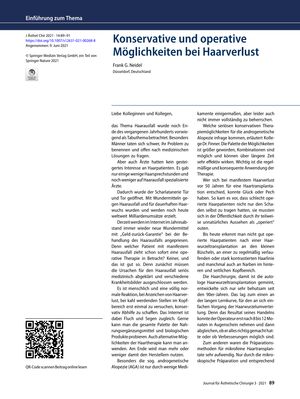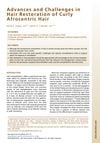Conservative and Surgical Options for Hair Loss
July 2021
in “
Journal Für Ästhetische Chirurgie
”

TLDR Effective hair loss treatments require medical diagnosis and realistic expectations, with hair transplants offering improved, natural-looking results.
The document discusses the evolution of treatments for hair loss, with a focus on androgenetic alopecia (AGA). It highlights the skepticism and lack of interest in hair loss treatments in the past, which led to the proliferation of ineffective "miracle" products. The article emphasizes the importance of medically investigating the causes of hair loss before considering surgery. It also outlines the advancements in hair transplantation techniques, including the follicular unit extraction (FUE) method, which has improved outcomes and reduced the need for extensive surgical teams. The author, Dr. Frank G. Neidel, notes that while the field has seen significant progress, it is crucial for surgeons to provide realistic expectations to patients and to know when to decline a procedure if it is beyond their capability or if patient expectations are too high. The document also mentions the importance of proper patient care and stress reduction for optimal healing post-surgery. The goal of hair transplantation is to achieve a natural-looking improvement, and the article suggests that the artistry of the surgeon in designing the hairline is as important as technical skill. The author encourages further interest in the field of hair restoration and offers additional information through the German Association of Hair Surgeons.






